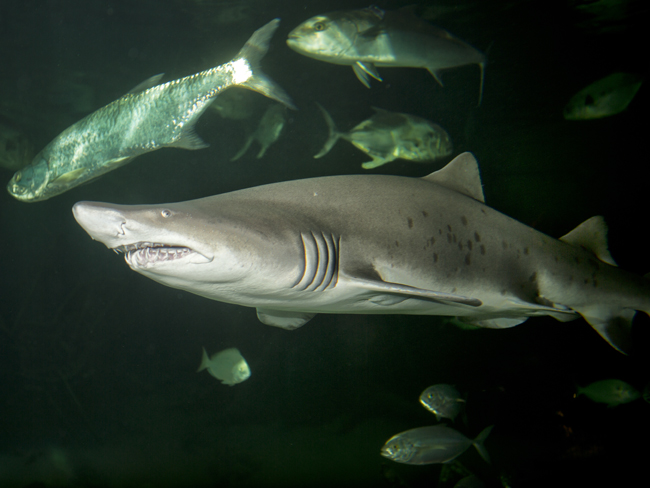Shark & Ray Conservation Week (Part 6 of a 6-part series – the White Shark)
This story marks the final of six blog stories spotlighting New Jersey’s shark species.
THE “GREAT” WHITE SHARK: MISTAKENLY BLAMED FOR THE NJ SHARKS ATTACKS OF 1916?
By Michael Davenport, Wildlife Biologist & GIS Manager
The New Jersey shark attacks of 1916, during which four people were attacked and killed and one injured along the New Jersey shore by one or more sharks, are usually blamed on the great white shark. The great white is definitely a dangerous shark and has been responsible for more fatal shark attacks on people than any other species. However, since one of the attacks occurred upstream within the Matawan Creek, another species (the bull shark) has recently received some scrutiny as being, if not the culprit in all the attacks, at least responsible for some. The bull shark, unlike the great white, is known for frequently entering freshwater, traveling far upstream in some rivers.

However, Matawan Creek is actually a saltwater tidal creek and is certainly deep enough for a white shark. Eyewitness accounts of individuals who witnessed a shark within the creek in 1916 also describe a shark which is more similar to a white rather than a bull shark. The white shark (either multiple individuals or one shark) remains the chief suspect for at least some, if not all, of the 1916 attacks.
Regardless of whether this is the species which terrorized the East Coast during the summer of 1916, this can be a deadly species due to their size, power, and sharp serrated teeth. This species specializes in preying on large marine mammals, primarily seals and sea lions. Even a “nibble” or “taste” can be fatal to a human.
To learn more about this shark species which occurs in New Jersey waters, visit our Field Guide page.




